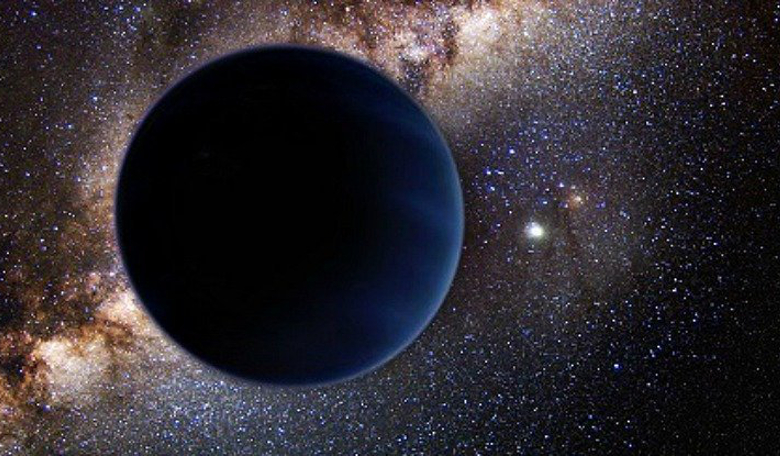The prospect of an unseen, mysterious super-Earth hiding out in the far reaches of the Solar System, has been a lingering and tantalising idea ever since Neptune was discovered in 1846. Although it has never been found, interest in the existence of a hypothesised Planet Nine has been reignited over the years, more recently in 2016 when two scientists proposed a possible orbit for the planet. Now though, an alternative explanation to this supposed planet has been put forward which could quash the idea for good.
Planet Nine, if it really is out there, has a predicted mass ten times that of Earth’s mass and it swings round the Sun in an elongated orbit that lasts anyway between 10,000 - 20,000 years. Its existence has been bolstered over the years due to discoveries such as the unlikely clustering of orbits for a group of extreme trans-Neptunian objects (eTNOs).
As the name suggests, these bodies orbit the Sun well beyond Neptune – anything from 150–250 AU away (Neptune for comparison orbits at a distance of 30 AU/4.5 billion kilometres away from our star on average) – and as such their orbits are much less affected by the known giant gas planets than for other less extreme trans-Neptunian objects (just regular TNOs).
However for a group of them, at their points of closest approach to the Sun, something seems to be shepherding their orbits together in a similar direction. These improbable alignments, coupled with many having similarly tilted orbits, suggests the strategic placement of an undiscovered planet as far as 500 AU away.
But what if its not one big planet coercing the orbits together, but a disk of much smaller objects that together has a combined mass as much as ten times that of Earth? This is a hypothesis by researchers at the University of Cambridge and the American University of Beirut, who have combined a simplified model of the Solar System, with the the gravitational forces of a hypothesised disc to satisfactorily explain the unusual orbitals exhibited by these wayward eTNOs.
"The Planet Nine hypothesis is a fascinating one, but if the hypothesised ninth planet exists, it has so far avoided detection," said co-author Antranik Sefilian, a PhD student in Cambridge's Department of Applied Mathematics and Theoretical Physics.
"We wanted to see whether there could be another, less dramatic and perhaps more natural, cause for the unusual orbits we see in some TNOs. We thought, rather than allowing for a ninth planet, and then worry about its formation and unusual orbit, why not simply account for the gravity of small objects constituting a disc beyond the orbit of Neptune and see what it does for us?" said Sefilian.
Together with Professor Jihad Touma, from the American University of Beirut, the duo modelled the full spatial dynamics of TNOs in conjunction with the orbits of the giant outer planets but instead of calculating the contents of the Kuiper Belt as we think it is currently, they replaced it with a more massive, extended disc in its place.
By removing planet nine from the model and instead allowing for lots of small objects scattered across a wide area, the team found that the collective attractions between objects in the extended disk could just as easily account for the eccentric orbits seen in some outlier eTNOs, when the mass of the disk was bumped up between a few to ten times the mass of the Earth.
"When observing other systems, we often study the disc surrounding the host star to infer the properties of any planets in orbit around it," said Sefilian. "The problem is when you're observing the disc from inside the system, it's almost impossible to see the whole thing at once. While we don't have direct observational evidence for the disc, neither do we have it for Planet Nine, which is why we're investigating other possibilities. Nevertheless, it is interesting to note that observations of Kuiper belt analogues around other stars, as well as planet formation models, reveal massive remnant populations of debris.
Of course there is the possibility that both a massive disc and a ninth planet exist; an option the duo have not ruled out. It just needs the discovery of more TNOs so that scientists can gather more evidence that might help explain their behaviour, concluded Sefilian.











